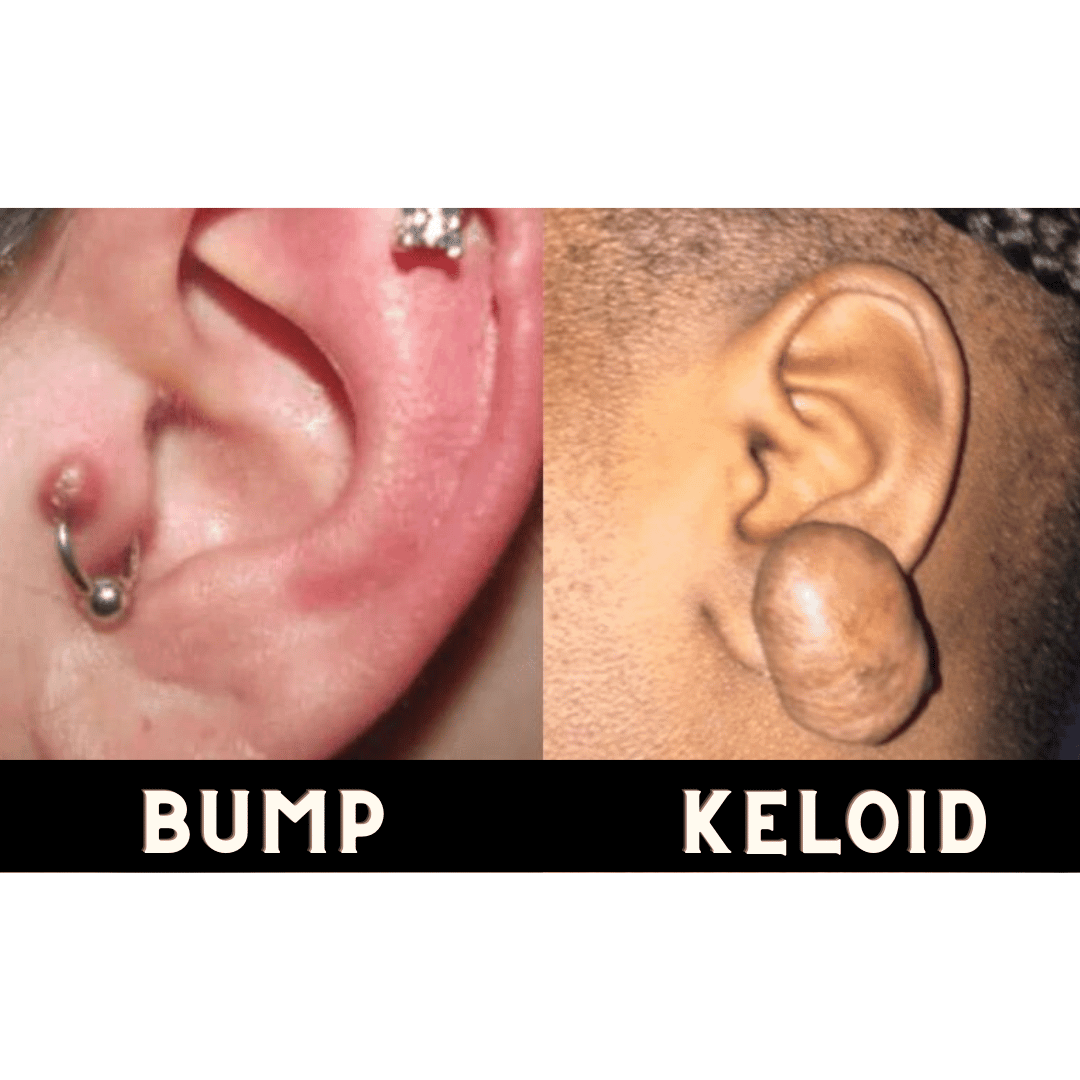
the differance between piercing Bumps and Keloids
Share
When it comes to piercings, one of the most common issues people may encounter is the formation of a bump or a keloid around the piercing site. Understanding the difference between these two types of skin growths is crucial in order to properly care for your piercing and maintain its appearance.
A piercing bump, also known as a hypertrophic scar, is a raised, red bump that forms around the piercing site. It is caused by an overproduction of collagen during the healing process. These bumps are usually benign and can be easily treated with over-the-counter creams or ointments that contain silicone or hydrocortisone like Fucidin. Using these products can help reduce the size of the bump and improve the overall appearance of the piercing. click here to see how to treat piercing bumps

A keloid, on the other hand, is a raised, thick scar that forms when the body produces too much collagen during the healing process. Keloids are more severe than piercing bumps and can be itchy, painful, and unsightly. They are more common in people with darker skin and can occur anywhere on the body, but they are most commonly found on the ears, chest, and shoulders. Treatment for keloids can include steroid injections, cryotherapy, laser therapy, or surgery.
It is important to note that if you suspect you have a keloid, it's best to seek a medical professional for proper diagnosis and treatment. To prevent the formation of keloids or bumps, it is important to take proper care of your piercing by cleaning it regularly, avoiding tight or restrictive clothing, and avoiding irritation or trauma to the area. At our online store, we offer a wide range of high-quality body jewelry that is designed to minimize the risk of irritation and promote healing.
